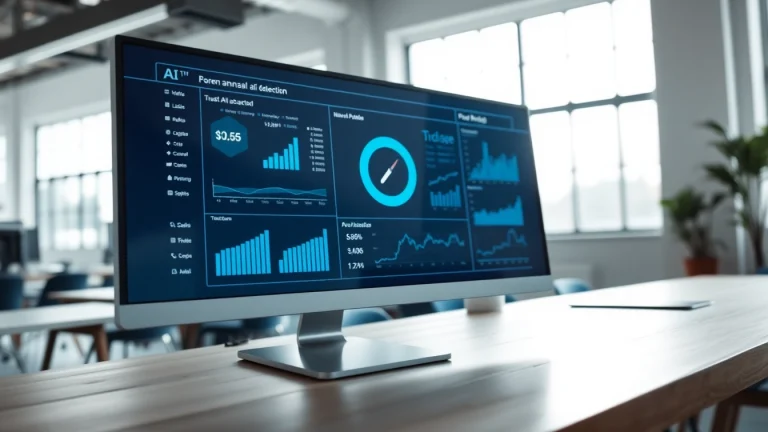
Understanding the AI Detector: Ensure Your Content Authenticity
What is an ai detector?
Definition of ai detector
An ai detector is a sophisticated tool designed to identify content that is generated by artificial intelligence (AI) systems. These detectors analyze text to determine whether it has been created by a human or produced by an AI model, such as language models like GPT-3 or ChatGPT. With the rise of AI-generated content, organizations and individuals are increasingly seeking tools that can provide insights into the authenticity of written material, ensuring clarity in communication and upholding integrity in various contexts, including education, journalism, and content marketing.
How ai detectors work
AI detectors utilize various methodologies to analyze text. The functioning of these tools typically involves:
- Text Analysis: Detectors examine the structure, style, and word choice within a piece of content. By comparing these elements against databases of known AI-generated content, they can identify patterns indicative of machine-generated text.
- Statistical Modeling: Many ai detectors use statistical models to compute the likelihood of text being AI-generated. These models can adjust based on the patterns observed from extensive datasets that include both human-written and AI-generated texts.
- Machine Learning Algorithms: The use of machine learning allows ai detectors to improve over time. As more AI models are developed and new patterns emerge, these algorithms can be trained to recognize new markers of AI-generated content.
Some advanced systems may also incorporate natural language processing (NLP) techniques to enhance detection accuracy further, allowing them to understand context and semantics beyond simple keyword analysis.
Common use cases for ai detectors
AI detectors have found applications in various fields:
- Education: In educational settings, teachers may use AI detectors to verify that students’ work is original and not generated by AI solutions. This helps maintain academic integrity.
- Content Creation: Content creators and marketers use these tools to ensure that their materials are authentic and resonate with human audiences, which can be pivotal in maintaining audience engagement.
- Journalism: Journalists may employ ai detectors to verify sources and ensure the authenticity of information before publication. This practice supports responsible journalism and enhances the credibility of news articles.
Importance of using an ai detector
Maintaining content integrity
The integrity of content is paramount in fostering trust across various sectors. Employing an ai detector ensures that the material published is genuine, helping to mitigate the risks associated with misinformation and unintentional deception. In a world where AI-generated content is increasingly common, maintaining this authenticity becomes crucial for professional and personal branding.
Detecting AI-generated content in education
In educational environments, the use of AI tools by students can pose challenges to traditional forms of assessment. By utilizing ai detectors, educators can uphold academic standards and ensure that students engage meaningfully with their studies, ultimately enhancing learning outcomes while discouraging academic dishonesty.
Supporting ethical writing practices
Utilizing an ai detector not only promotes content authenticity but also encourages ethical writing practices. By identifying AI-generated material, content creators can make informed decisions about attribution and originality, actively contributing to a culture of honesty in writing.
How to choose an ai detector
Key features to consider
When selecting an ai detector, consider the following features:
- Accuracy: Look for detectors with a high accuracy rate in distinguishing between human and AI-generated text, preferably supported by independent validation and studies.
- User Interface: A straightforward and user-friendly interface can greatly enhance the experience, especially for first-time users or non-technical individuals.
- Multi-format Support: Choose a tool that can analyze various types of content, including essays, articles, and social media posts, to maximize its utility.
Comparing accuracy among popular tools
Not all ai detectors are created equal. It is important to compare them based on testing results and features. Many testing platforms publish their results, allowing users to evaluate how accurately a particular detector identifies AI content versus human authorship. Being diligent in this comparison process can help users choose a tool that best meets their needs.
User experiences and testimonials
Feedback from users can provide valuable insights into the functionality and effectiveness of ai detectors. Engaging with testimonials and case studies can reveal both strengths and limitations of specific tools, helping prospective users make informed decisions about which detector to use.
Best practices for utilizing an ai detector
Integrating ai detectors into your workflow
Incorporating an ai detector into your workflow can enhance productivity and maintain the integrity of your outputs. Here are some best practices for effective integration:
- Routine Checks: Make it a habit to run content through the AI detector before publication. This routine check can help catch potential issues before they reach the audience.
- Feedback Loop: Use the information from the detector to refine writing skills. Understanding the distinctions between AI and human writing can help improve one’s ability to produce original work.
- Combine Tools: Consider using an ai detector in conjunction with other writing tools such as grammar checkers and plagiarism detection software for comprehensive content assessments.
Common challenges and solutions
While utilizing ai detectors can seem straightforward, certain challenges may arise:
- False Positives: Some detectors may incorrectly flag human-written content as AI-generated. To mitigate this, it’s helpful to understand the specific detection method being used and ensure that the content is reviewed thoroughly.
- Overreliance on Technology: Tools should assist, not replace, critical thinking and analysis. Encourage users to combine insights from detectors with their own judgment to make final determinations about content authenticity.
Assessing the results accurately
Interpreting the results from an ai detector requires contextual understanding. Not every piece of text flagged as AI-generated should be discarded; rather, evaluate the reasons behind the classification and determine potential adjustments that can enhance authenticity.
Future of ai detectors in content creation
Emerging technologies
The evolution of ai detectors is poised to continue alongside advancements in AI technology. As AI models become more sophisticated, detectors may need to leverage advanced machine learning techniques and natural language understanding to maintain effectiveness. Emerging solutions may also harness real-time analysis, providing instantaneous feedback on potential AI influences in writing.
The evolving role of AI in writing
As AI tools become more integrated into writing processes, the role of ai detectors will likely shift. Understanding AI’s influence on writing—whether as a collaborative partner in creative endeavors or as a standalone content creator—will be crucial in guiding the ethical use of these technologies.
Predictions for the industry
Looking ahead, the industry can expect to see a growing need for sophisticated ai detectors that are capable of adapting to ever-evolving AI capabilities. With increased demand across sectors for truthful and credible content, ai detectors will play a pivotal role in ensuring that the written word remains authentic and trustworthy.


